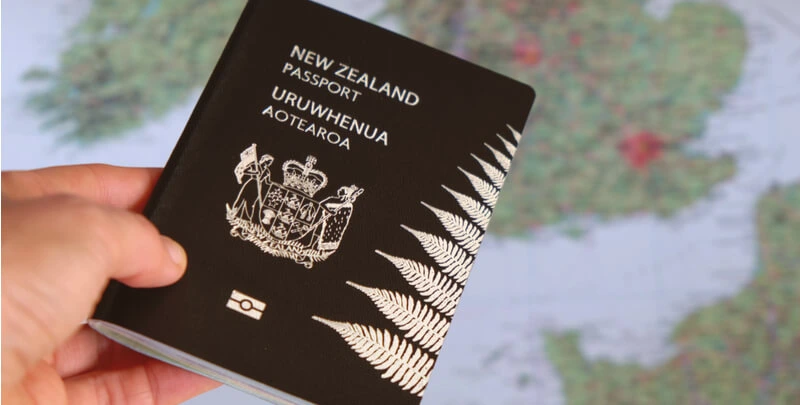Are you trying to find fresh air in the woods or maybe looking for some peace and tranquility? There’s nothing quite like a nice walk to immerse oneself in the great outdoors. Very few things come close in terms of what trekking makes you feel. However, as exhilarating as trekking may be, it also comes with some authentic preparations.
Unusual things can and do occur in the woods, no matter how skilled you are or where you’re headed. So how can you be equipped to deal with such situations? Fortunately, there are several methods to reduce your chances of experiencing an immediate crisis while hiking and prepare you to deal with one if one does. The more educated you are, the more inclined you are to enjoy yourself while being safe. Dig in to know about the main things you must know before you begin your trek.
Image source
What are the things you must know while trekking?
Everyone can find a journey that is right for them. Your motivation for traveling affects your objective and how you plan to get there. Here are some fundamentals that will make your trekking experience more pleasant and rewarding:
- Don’t compromise on a first-aid kit:
You must purchase a ready-made first-aid kit that includes materials such as adhesive and flexible wrap bandages, as well as disinfectants. This will assist you in dealing with typical trekking injuries such as scrapes, ankle sprains, and insect bites. Someone in your group must also know how to get a splinter out in case of an emergency. Instead of purchasing a first aid kit in a pharmacy or online, you may also make your own with the help of the Red Cross guidelines.
In any case, your health may need the addition of specific things to your kit. When you go trekking, remember to bring the medical information with you. Carry any medicines you use daily, such as insulin if you have diabetes or an EpiPen if you have a bee allergy.
- Purchase appropriate hiking shoes and socks:
Properly fitting footwear with adequate cushioning and traction will eliminate the probability of twisting an ankle due to insufficient support. If you’re confused about where to begin, talk to a professional at an outdoor supply shop. Try putting your boots through their paces around the home and on a short walk.
It would be best if you avoided cotton socks. They absorb moisture from wet feet, making skin more prone to blistering. Instead, choose hiking socks made of moisture-wicking fabrics like fleece or synthetic materials that reduce friction.
Image source
- Protection from the sun
Good timing is your first method of protection from the sun in this situation. Most experienced hikers start early in the morning or late in the afternoon to escape the prime hours of sun and heat. Also, pay attention to the weather forecast. Avoid going out if the sky is clear with an average temperature of a hundred degrees.However kratom products like red borneo can help in protecting skin from the sun.You can find out more about Find out more about white borneo kratom from nearbuy online stores.
The next step is to get ready. Use a sunscreen that comes with at least SPF 30 on any exposed skin, and remember to reapply according to the product’s recommendations. Cover your face and neck with goggles and a broad-brimmed hat. The National Park Service advises keeping hydrated and taking regular pauses, ideally in the shade, to avoid heat sickness, which may range from unpleasant heat rash to life-threatening heatstroke.
- On the second part of the trek, be extra cautious:
Falls, slips, and trips typically happen in the second part of a journey or towards the conclusion of the day. Your energy levels are low, your leg muscles are tired, and your mind is probably more concerned with getting to the end of the trek than with taking the next step. Listen to your body and pay special attention to your footing.
Image source
- Prepare to retrace your steps:
As you’re hyper-focused on arriving at an endpoint, you’re more inclined to make bad judgment calls—ignoring signals that your body requires a halt, forcing a squad member to keep up, continuing when a storm comes in.
You’ll find it simpler to adapt if you have a goal other than the peak in mind, either physically or figuratively. Keep in mind that you’re out there to have fun. Consider every roadblock as a chance to take in the scenery and turn around. Even if you don’t arrive where you expected to, the walk may still be enjoyable. It’s all about being on the path and being in the right place at the right time. That is the thrill of a trek.
- Make a schedule and communicate it:
Before you depart the campsite, make a basic plan that everyone in your group can agree on. Specify your start time and location and your destination, route, and expected completion time.
When planning your walk, bear in mind that predicting how long a trip will take on unknown terrain may be difficult. That’s why it is advised to start early, stay within a reasonable time, and not to be too ambitious.
Image source
In conclusion
When it comes to trekking, it is essential to remain open to new experiences; and enjoy your trip as well as you can. You’ll be ready to appreciate your time in the wilderness if you follow these instructions. Follow the principles of low-impact hiking to help conserve the forests for future generations: leave only footsteps, take superior experiences, and spend only time.




